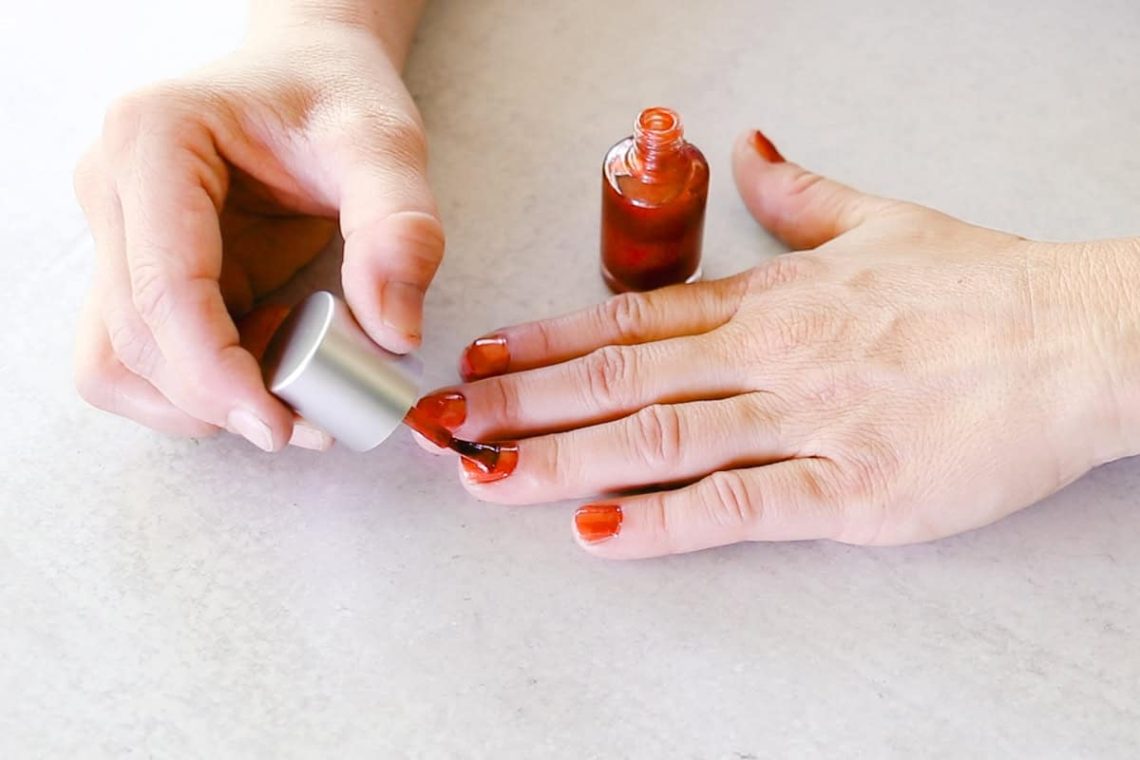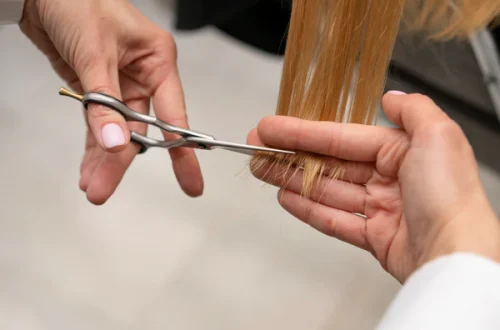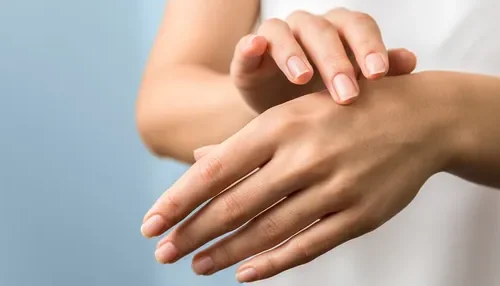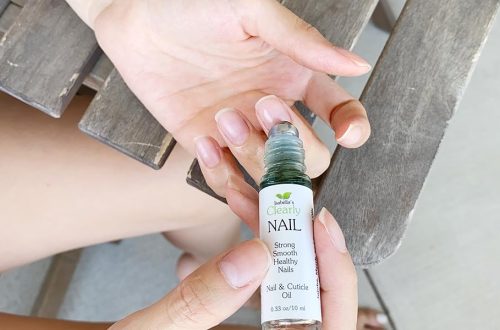The beauty industry has undergone a significant transformation in recent years, with consumers becoming increasingly aware of the potentially harmful chemicals found in many conventional cosmetics. Nowhere is this more evident than in nail polish, where traditional formulations often contain a cocktail of synthetic ingredients that can be absorbed through the nail bed and cuticles. For those seeking a safer, more natural approach to nail color, creating your own all-natural nail polish offers an exciting alternative that’s both fun and health-conscious.
Homemade nail polish may not provide the same opaque coverage or chip-resistant finish as commercial varieties, but it offers something far more valuable: peace of mind. By controlling every ingredient that touches your nails, you can experiment with natural colorants while avoiding the “toxic trio” of formaldehyde, toluene, and dibutyl phthalate (DBP) commonly found in traditional polishes. This DIY approach is particularly appealing for parents who want to introduce their children to nail color without exposing them to harsh chemicals, or for anyone with sensitive skin who reacts to conventional formulations.
The Appeal of Natural Nail Color
Creating your own natural nail polish offers several compelling benefits:
Health Considerations
- Chemical-Free: Avoid exposure to synthetic solvents, plasticizers, and preservatives
- Hypoallergenic: Reduce risk of allergic reactions or skin irritation
- Safe for Children: Create fun, non-toxic color options for little ones
- Breathable Formula: Allows oxygen to reach the nail bed, promoting healthier nail growth
Creative Expression
- Custom Colors: Mix and match natural pigments to create unique shades
- Educational Experience: Learn about ingredient properties and cosmetic chemistry
- Sustainable Practice: Reduce packaging waste and single-use plastic bottles
- Personalized Fragrance: Add natural essential oils for a subtle, pleasant scent
The Method: Creating Natural Nail Color
While completely natural nail polish that mimics commercial formulations is challenging to achieve, you can create tinted nail treatments using safe, natural ingredients:
Base Natural Nail Treatment
- 2 tablespoons clear nail polish base (water-based or natural brand)
- 1/2 teaspoon vegetable glycerin
- 2-3 drops vitamin E oil
- Natural colorants (see options below)
- Prepare Workspace: Clean a small glass bottle or empty nail polish bottle thoroughly with rubbing alcohol.
- Mix Base Ingredients: In a small bowl, combine clear nail polish base with vegetable glycerin and vitamin E oil.
- Add Color: Gradually add your chosen natural colorant while stirring with a clean toothpick or small brush.
- Transfer Mixture: Carefully pour the mixture into your clean bottle using a small funnel.
- Seal and Label: Close the bottle tightly and label with contents and date prepared.
- Mix Thoroughly: Shake well before each use to blend ingredients.
Natural Colorant Options
Creating beautiful, natural nail colors requires understanding safe, effective pigments:
Natural Pigment Sources
- Pink: Beetroot powder or hibiscus powder (1/8 teaspoon)
- Brown: Cocoa powder or coffee grounds (1/16 teaspoon)
- Red: Alkanet root powder or madder root powder (1/8 teaspoon)
- Orange: Annatto seeds or paprika powder (1/16 teaspoon)
- Yellow: Turmeric powder (pinch) or calendula powder (1/16 teaspoon)
- Green: Spirulina powder or matcha powder (1/16 teaspoon)
- Purple: Purple carrot powder or butterfly pea flower powder (1/8 teaspoon)
Color Intensity Tips
- Start with small amounts of colorant and gradually increase until desired shade is achieved
- Fine powders work better than coarse particles for smooth application
- Sift powdered colorants through a fine mesh to remove lumps
- Store colored polishes separately to prevent cross-contamination
Application and Expectations
Understanding the limitations and proper techniques ensures the best results:
- Prepare Nails: Clean nails thoroughly and lightly buff the surface for better adhesion.
- Base Coat: Apply a natural base coat to protect the nail and create an even surface.
- First Layer: Apply a thin layer of your natural polish, allowing it to dry completely.
- Second Layer: Apply a second thin layer for more even color coverage.
- Top Coat: Finish with a natural top coat to seal the color and add shine.
- Drying Time: Allow at least 15-20 minutes for complete drying between layers.
- Natural polishes provide sheer to medium coverage rather than opaque color
- Longevity may be shorter than commercial polishes (2-4 days)
- Color intensity may fade slightly as the polish dries
- Some natural colorants may stain nails if left on for extended periods
Alternative Natural Nail Treatments
For those who prefer simpler approaches to natural nail care:
Staining Techniques
- Beet Juice: Apply fresh beet juice directly to nails for a temporary pink tint
- Turmeric Paste: Mix turmeric with honey for a golden stain (wear gloves to avoid skin staining)
- Hibiscus Tea: Concentrated hibiscus tea can provide a subtle pink or purple tint
- Walnut Shell Tincture: Creates a natural, long-lasting stain when applied and allowed to dry
Nail Strengthening Treatments
- Horsetail Infusion: Silica-rich herb that supports nail strength when used as a soak
- Protein Treatments: Mix gelatin with warm water for a strengthening nail mask
- Herbal Oils: Infuse olive oil with rosemary or lavender for nourishing nail treatments
Storage and Shelf Life
Proper storage ensures your natural nail treatments remain effective:
Storage Guidelines
- Cool, Dark Place: Store away from heat and direct sunlight to prevent ingredient degradation
- Tight Sealing: Keep bottles tightly closed to prevent evaporation and contamination
- Labeling: Clearly mark contents and preparation dates for rotation purposes
- Refrigeration: For longer shelf life, store in refrigerator (bring to room temperature before use)
Shelf Life Expectations
- Fresh Mixtures: 1-2 weeks when stored properly
- Powdered Colorants: 6-12 months in airtight containers
- Base Ingredients: Follow manufacturer’s expiration dates for purchased bases
- Signs of Spoilage: Off odors, separation that won’t remix, or mold growth
Safety Considerations
Even natural ingredients require careful consideration:
Ingredient Safety
- Powder Inhalation: Avoid breathing in fine powders by working in ventilated areas
- Skin Contact: Wear gloves when handling strong colorants like turmeric
- Eye Protection: Be cautious when working with fine powders near the face
- Ingestion Prevention: Keep all nail products away from children and pets
Troubleshooting Common Issues
Addressing challenges that may arise during natural nail polish creation:
Consistency Problems
- Too Thick: Add a small amount of clear nail polish base or rubbing alcohol
- Too Thin: Add a small amount of vegetable glycerin or clear nail polish thickener
- Lumpy Texture: Strain mixture through a fine mesh or coffee filter
Color Issues
- Fading Color: Increase concentration of colorant or add a natural preservative
- Uneven Application: Ensure thorough mixing and apply very thin layers
- Staining Concerns: Apply a clear base coat before colored layers
Environmental and Economic Benefits
Natural nail polish creation offers advantages beyond personal health:
Eco-Friendly Aspects
- Reduced Packaging: Reuse bottles and containers rather than purchasing new ones
- Biodegradable Ingredients: Natural components break down more safely in the environment
- Minimal Chemical Runoff: No synthetic solvents to contaminate water systems
- Local Sourcing: Many ingredients can be purchased from local health food stores
Cost Savings
- Bulk Purchasing: Buy natural colorants in larger quantities for better value
- Multi-Purpose Ingredients: Many components have other household or cosmetic uses
- Reduced Waste: Make only what you need, reducing expired product disposal
- Long-Term Investment: Initial ingredient purchase provides materials for multiple batches
Educational and Social Aspects
Beyond personal use, natural nail polish creation offers broader benefits:
Learning Opportunities
- Chemistry Education: Understand how ingredients interact to create different properties
- Creative Development: Experiment with color theory and artistic expression
- Skill Building: Develop precision and attention to detail through careful mixing
- Sustainability Awareness: Learn about ingredient sourcing and environmental impact
Social Engagement
- Family Activities: Safe, non-toxic projects suitable for children and adults
- Gift Giving: Personalized, handmade beauty products make thoughtful presents
- Community Building: Share techniques and recipes with friends and online communities
- Workshop Opportunities: Host natural beauty-making parties for special occasions
Advanced Techniques and Variations
For those who want to expand their natural nail art skills:
Special Effects
- Glitter Accents: Add biodegradable glitter or finely ground mica powder
- Marbleized Effects: Drop different colored polishes into water and dip nails
- Stenciling: Use natural sponges or leaves as stamping tools
- Textured Finishes: Experiment with different application tools for unique effects
Seasonal Variations
- Spring Pastels: Use lighter concentrations of natural colorants for soft hues
- Summer Brights: Mix complementary colors for vibrant seasonal shades
- Fall Warmth: Combine earth-tone colorants for autumnal nail colors
- Winter Cool: Blend blues and purples with white for icy effects
Conclusion: The Beauty of Natural Expression
Creating all-natural nail polish represents more than just a beauty trend – it’s a return to mindful, intentional self-care that honors both personal health and environmental responsibility. While the results may not perfectly replicate the high-gloss, chip-resistant finish of commercial polishes, they offer something far more valuable: the satisfaction of knowing exactly what you’re putting on your body and the joy of creative expression through color and texture.
The journey into natural nail color opens doors to a broader understanding of ingredient sourcing, cosmetic chemistry, and the relationship between beauty and wellness. By taking control of what touches our skin and nails, we participate in a growing movement toward transparency and sustainability in personal care. Each small batch of homemade polish becomes a statement of personal values and a celebration of nature’s own palette.
Whether you’re a parent seeking safe beauty options for your children, someone with sensitive skin looking for gentler alternatives, or simply a creative spirit who enjoys hands-on beauty projects, natural nail polish offers an accessible, rewarding path to colorful self-expression. The process itself – from selecting ingredients to applying the final coat – becomes a meditative ritual that transforms routine nail care into an act of mindful creativity.
As you experiment with natural colorants and techniques, remember that perfection isn’t the goal. The unique variations and subtle imperfections in homemade polish often contribute to their charm and individuality. Embrace the learning process, celebrate small successes, and enjoy the knowledge that your beautiful nails are adorned with nothing more than nature’s own gifts.
In a world filled with mass-produced beauty products and synthetic ingredients, the simple act of creating your own natural nail color becomes a form of gentle rebellion and self-empowerment. Your nails become a canvas for both personal creativity and environmental consciousness, proving that true beauty doesn’t require compromise when we’re willing to explore the abundant resources that nature provides.





